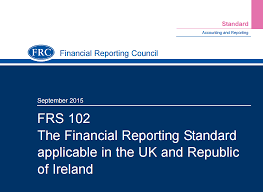In this second article on transition, we consider some practical tips for applying the requirements of Section 35 (the transition section) of FRS 102.
The Financial Reporting Council issued a report called the Annual Review of Corporate Reporting 2015/2016 on 21 October 2016 encouraging smaller entities to ‘start their planning as soon as possible in order to ensure they are prepared for a smooth transition’.
The FRC stated that ‘small entities will also be applying FRS102 for the first time from 1 January 2016, which may pose some challenges for preparers, but should improve reporting in certain areas, as well as offering opportunities to reconsider the necessary disclosures. Anecdotal evidence suggests that some of the larger private companies applying FRS 102 from 1 January 2015 could have started their planning for transition earlier; any entities yet to transition to new standards should start their planning as soon as possible to ensure they are prepared for a smooth transition.’
Here are some of the issues that may need close attention during the transition phase:
Dormant companies – make any changes before transition date
If any changes are planned that will affect the balances in dormant companies’ financial statements, it may be beneficial to make the changes before the date of transition. This should ensure that the company can take advantage of the exemption from restating its accounting policies.
Establish fair values at the appropriate time
Although it will often be possible to obtain fair values later, it will involve more effort and research than if the valuations are done as close as possible to the date to be reflected in the valuation.
Early identification of financial instruments
Make sure that contracts and agreements are reviewed to identify all financial instruments within your business at the earliest possible stage, including contracts such as derivatives that may not have previously been recognised on the balance sheet.
Some accounting options will be available only when the necessary steps have been taken by the transition date. Fair values are used extensively in the measurement of certain financial instruments (e.g. investment properties) and this information is gathered more easily at the time of transition than afterwards.
Keep contract terms basic wherever possible
Make sure all staff with responsibilities for negotiating contracts on behalf of the organisation, from sales and trade purchases to financing arrangements, are aware of the potential pitfalls associated with any unusual contract terms. It may be helpful to draw up a list of issues that need consideration or ensure prior approval before contracts are completed.
Modification of loan arrangements
When bank loans have been renegotiated under substantially different terms prior to the transition date, but there has not been a process of derecognizing the old liability and recognising a new one, the entity may apply the exemption in Section 35 to retain this treatment on transition.
However, this exemption does not apply if these renegotiations take place after the transition date, that is after 1 January 2015 for a calendar-year company. In such instances the comparative balance sheet will need restated.
Amortisation of intangible assets
When intangibles have previously been tested for impairment and not amortised, a remaining useful life will need to be established at the transition date. When the total estimated useful life of the intangible is estimated to be more than five years, reliable back-up evidence will be required to support the estimated total useful life and the remaining useful life at transition. This would often be available in the form of cash flow projections.
Translation of goodwill and fair value adjustments at closing rate
FRS 102 requires goodwill and fair value adjustments to be translated at the closing rate. This may differ from the current treatment as current Irish GAAP does not specify the rate to be used and therefore many entities have translated goodwill and fair value adjustments at the rate ruling at acquisition.






